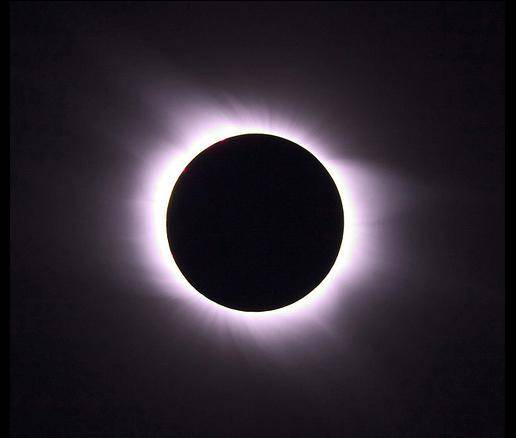The sun will play hide and seek behind the moon Monday, Aug. 21, during a partial eclipse seen from the San Juan Islands.
“From the National Aeronautics and Space Administration’s data, we will see about an 88 percent eclipse here. Seattle is right on the edge of 95 percent,” said Raena Parsons, San Juan National Park education specialist.
The San Juan County Land Bank, Island Rec, the Conservation District, Indigenous Education Institute, OPALCO, Friends of Lime Kiln, the San Juan Islands’ Visitors Bureau, San Juan Island Library, and the San Juan Island National Monument have pulled together with the national park for a free solstice viewing party at South Beach. Free shuttles from Friday Harbor to South Beach run from 8 a.m. to 9:30 a.m., and return between 11 a.m. to 12:30 p.m, as the dance between the sun and moon ends.
While Seattle will have a better view of the eclipse, seeing closer to totality, Parsons has fielded several calls from off-island residents wanting to visit the islands nonetheless.
“Many people seek out natural areas for events like this,” she said.
Telescopes with solar filters will be available for those attending the party.
“If you have never seen an eclipse through a telescope, you should join us and check it out, it’s incredible,” Parsons said.
She added that viewers should never look at the sun through a telescope without solar filters. “You can go blind in seconds,” she said.
NASA has also warned that many eclipse sunglasses found online are not certified. To check sunglasses, visit eclipse.aas.org/eye-safety/iso-certification.
Parsons added that taking photos of the eclipse without special filters on cameras, including those on phones can ruin the camera. The park will not have those specific filters available. Research in a journal called “The Lancet” has shown that, contrary to popular belief, the majority of people with damage from looking at the sun with the naked eye, known as eclipse retinopathy, are not totally blinded. Never look directly at an eclipse, especially a partial one, Parsons emphasized. While you might go completely blind, looking directly at an eclipse can cause eye issues.
“You can really damage your eyes without even feeling it,” Parsons warned.
For more safety tips, visit eclipse2017.nasa.gov/safety.
According to Parsons, the moon will begin to shift in front of the sun at approximately 9:06 a.m. covering 88 percent of the sun at around 10:20 a.m.. The sun returns from hiding by 11:30. While San Juan County may only be seeing a partial eclipse, those living in Oregon will be treated to a full eclipse, as well as those along the narrow, 60-mile wide “path of totality” stretching from Oregon to South Carolina. The last time there was such an eclipse, from the Pacific Coast of America to the Atlantic Coast, was June of 1918, according to NASA’s website. It has also been dubbed the “Great American Eclipse,” because no other country will see it as a total eclipse. The next time a total solar eclipse occurs in the United States is April 8, 2024. According to Parsons, the path of that eclipse runs from Texas to Maine. Washington should see a 66 percent partial eclipse, so the event known as “Great American Eclipse” is the one to watch.
“I love anything that has to do with the skies and solar system, and sharing it with people,” she said.
For information, visit www.timeanddate.com and search “eclipse.” Also contact Parsons at 378-2240 or visit www.nps.gov/sajh/planyourvisit/calendar.htm.



